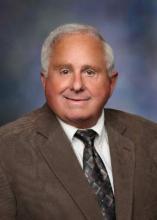A federal proposal to extend the period before an accountable care organization can be penalized for poor performance may keep many ACOs from disbanding and encourage more to form, said Clif Gaus, president and CEO of the National Association of ACOs.
Under the proposal, announced Dec. 1 by the Centers for Medicare & Medicaid Services, new and existing ACOs in the Medicare Shared Savings Program (MSSP) could take an additional 3 years before facing punishment for subpar performance. Currently, ACOs can choose to receive a smaller share of any savings for 3 years before becoming subject to any penalties.
“We’re pleased they’ve extended the one-sided track to additional 3 year contract terms,” Mr. Gaus said in an interview. “That was a major concern of ours. Our surveys have shown more than two-thirds of ACOs were going to drop out if they didn’t have the option to stay in the one-sided track.”
Although the change would give ACOs a total of 6 years before incurring possible punishment, the shift would come with a catch. Three-year-old ACOs that decide to avoid penalties for another 3 years could retain only 40% of the money they save Medicare, compared to the 50% maximum they can keep during their first 3 years.
The exception is a bum deal, said Julian D. “Bo” Bobbitt Jr., an ACO expert and health law attorney in Raleigh, N.C.
“They call them incentive payments for a reason,” he said in an interview. “You need to incentivize. Physicians already need to wait about 18 months for calculations to determine if there are any savings, and then to ratchet it down – that’s an unnecessary disincentive.”
The proposed changes come in response to criticism by ACOs that the shared savings program does not allow enough time to build infrastructure and enhance quality before financial risk is incurred.
More than 330 ACOs in 47 states currently participate in the MSSP. In their first year, ACOs held spending below their benchmarks by $705 million and earned shared savings payments of more than $315 million, according to the CMS. Another 60 ACOs had expenditures below their benchmark, but not by an amount sufficient to earn shared savings.
Also under the proposal is a new ACO option with even greater rewards for those willing to take greater risks. This third track would allow ACOs to retain up to 75% of money they save, but also be responsible for up to 75% of all losses, depending on the quality performance of the ACO. Bonuses for the tier would be capped at 20% of an ACO’s updated benchmark and losses at 15% of its updated benchmark in each year of the organization’s agreement period.
Third-track ACOs would have a list of patients at the start of the year whose treatment and costs they must manage. Currently, the CMS identifies beneficiaries as included in an ACO at the end of the year based on how much care they received from network providers. Stakeholders have requested that the CMS identify the patients at the beginning of the year to allow for more targeted improvement efforts.
The proposed rules smooth out some of the problems with administration of the shared savings program, but do not address all physician concerns with the program, Mr. Bobbitt said. For instance, the proposals do not provide a solution for physicians employed by large health systems who wish to participate in an ACO in a smaller group. Right now, no subset of an entity can set up or join an ACO under one tax identification number.
“A health system employer of physicians not only can block a group of physicians from participating in any ACO, but even if they consented, the only way CMS would allow it would be if the entire mass of physicians participated,” Mr. Bobbitt said. “This is particularly difficult for primary care physicians who can be very successful in a small primary care–centric ACO. The hospital system pool of employed physicians may be in the thousands and not have the right ratio of subspecialties for ACO success. I had hoped that this would have been addressed in the regs.”
Mr. Gaus agreed the proposals are a good start, but noted that more improvements to the shared savings program are needed. His association plans to take advantage of continuing the dialogue with the CMS on making changes to the program. The proposed rules are open to a 60-day comment period.
Among other questions, the government is asking for feedback on alternative ways of determining whether an ACO has saved the government money. The CMS now estimates the amount ACO participants have spent in the past and uses that as a benchmark. Under one scenario, ACO spending would be compared to the average amount spent by doctors and health providers in the same geographical area.



